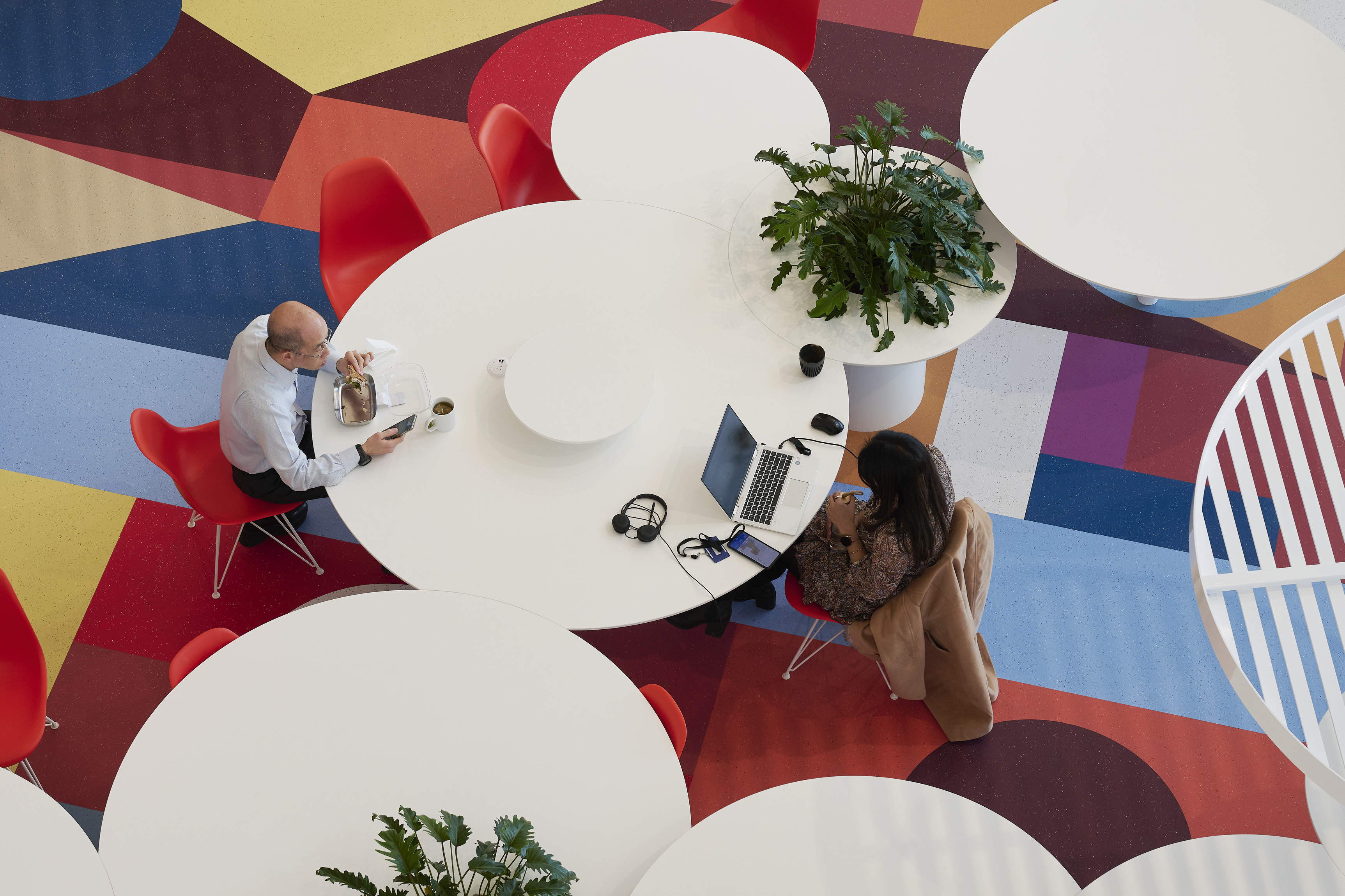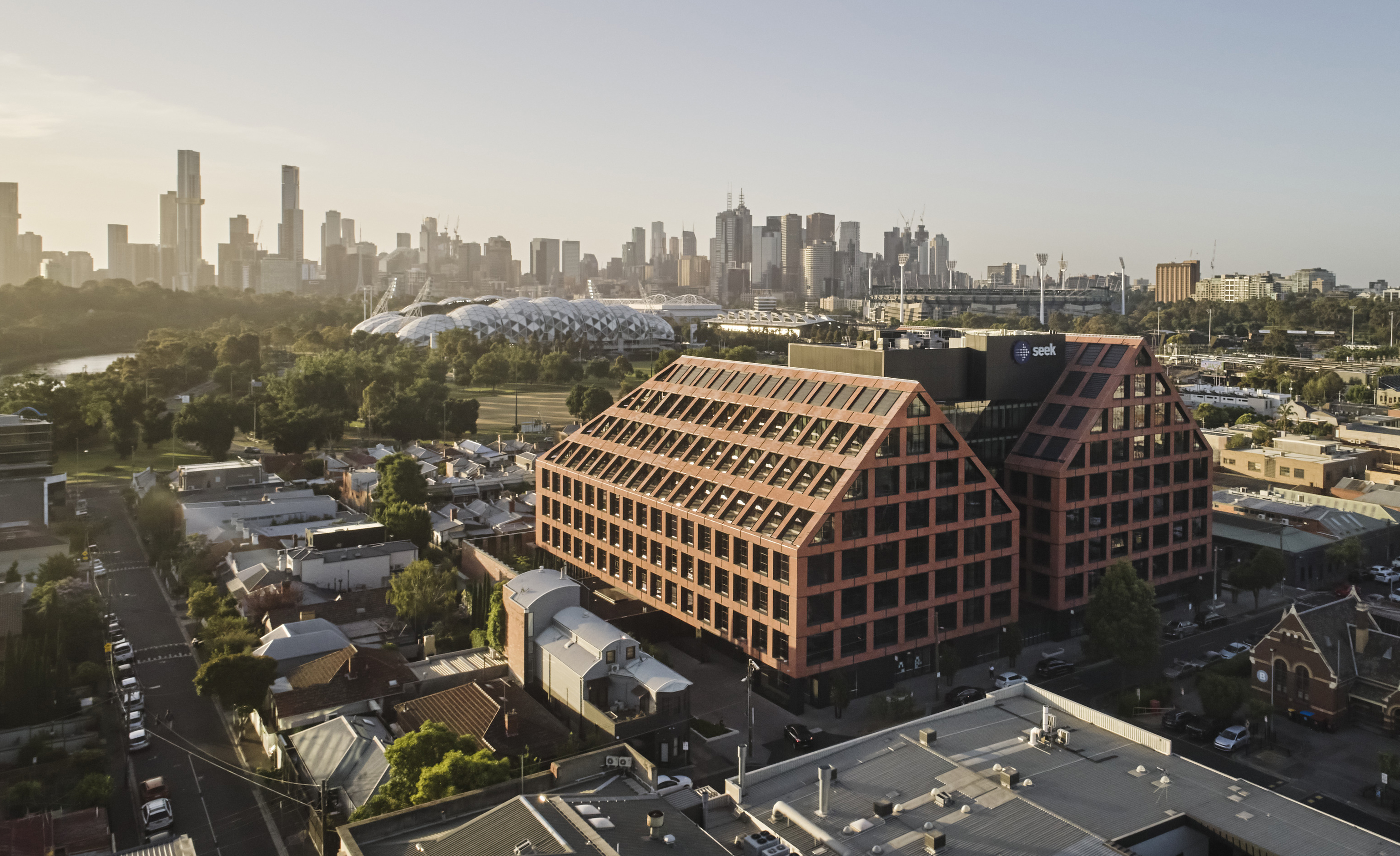Sustainability highlights
- 98.4% of all building waste has been diverted from landfill
- 1,769 sqm of carpet tiles were retained
- 115 sqm of cork was refurbished for reuse
- 111 types of salvaged material used
- 73% of the fit-out was sourced from the east coast of Australia
- 100% of workstations on Level 21 were salvaged from an existing fit-out
- 1,900 plants throughout the space
Embracing circularity
Creative reuse solutions feature throughout the project. The original stair mesh balustrade was retained and wrapped around columns to foster a living, green display with recycled timber studs used as partitions around print areas and storerooms.
Leftover perforated metal, sourced from a closing Ripple Iron factory, found a new purpose as café joinery and wall cladding — each piece carrying its own character. Other reclaimed treasures include blackbutt timber floorboards from New South Wales wharves and Brisbane volcanic tuff, a type of rock, from site work excavations at Brisbane Airport. The latter echoes the rugged elegance of nearby Kangaroo Point Cliffs.
Additional touches highlight the resourcefulness of the design: Five Mile Radius transformed salvaged floorboards into custom stools, and local Museum of Brisbane display boxes were reimagined as furniture, mounted on bases sourced from shopping centre food court tables. Crushed oyster shells, collected from Queensland restaurants, form the render on the main central columns — the first installation of its type, developed by local company Mineral Fox. Later in the design process, construction company Buildcorp identified an opportunity to reuse green granite from a demolition site, which now serves as the winter garden flooring.
Country-led design
Working with First Nations design agency Blaklash, Arup’s new Brisbane workspace immediately evokes the local Yuggera and Turrbal Country. A reflective metal ceiling mirrors light like a waterway, linking the space to the nearby Brisbane River and the historical creek that once lay on the site’s grounds.
At the building’s heart, a vaulted double-height arrival space showcases artwork by Waanyi and Kalkadoon artist and designer Keisha Leon, deepening the connection to Yuggera and Turrbal Country. Some 1,900 plants and diverse floor levels mimic the landscaped terrain of Country, actively restoring the site’s ecological memory and reflecting the riparian systems erased by colonial development.





















